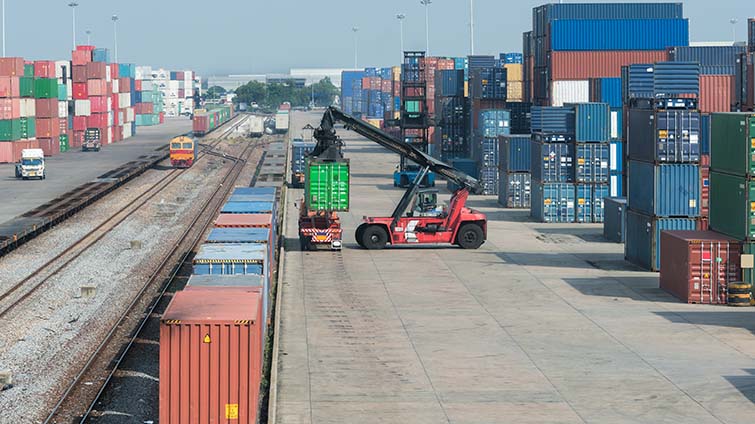Navigating early peak season rate hikes

Early peak season declarations and pricing shifts
Peak season 2025 is underway, with the intermodal market experiencing its annual surge across Southern California. Outbound volumes from this region historically rise 20–40% leading into the holidays, often prompting railroad carriers to apply surge fees on spot freight or shipments exceeding committed thresholds.
This year, the season began earlier than expected, with one provider declaring peak weeks ahead of the broader market, initially imposing surcharges up to $1,500 per load before reducing them to $800. This was followed by another carrier with fees of $300 for committed customers and up to $500 for spot shipments. These early actions reflect heightened sensitivity to capacity constraints and a proactive approach to managing demand.
West Coast as the intermodal engine
The West Coast, particularly the Port of Los Angeles, remains the anchor of intermodal supply chains. Demand is largely port-driven, and tariff policy shifts have added volatility. Earlier this year, tariff uncertainty triggered record import volumes in June and July. Although the U.S.–China trade agreement was set to expire in August, a 90-day extension now pushes the deadline to November, keeping shippers cautious.
Signs of a slowdown are emerging. In August, the Port of Los Angeles handled 944,832 import containers, a 6.6% decline from July’s record. The National Retail Federation’s Global Port Tracker projects import volumes will continue tapering through December, potentially reaching their lowest levels in nearly three years.
Forecasting challenges and shipper behavior
The shifting dynamics of the intermodal industry have complicated forecasting. Some shippers are pausing certain SKUs, others are pulling demand forward, and most are reevaluating supply chain strategies. Outbound shipments from Southern California remain strong, but it is uncertain whether demand will persist through year-end as in previous years. If importers reach inventory targets earlier than expected, seasonal softening could arrive sooner than usual.
Preemptive cost-saving opportunities
Timing and planning are critical for minimizing peak-season costs. Delaying freight by a few weeks may yield lower rates, while shippers with unavoidable peak shipments benefit from early alignment on volumes and precise forecasting.
Annual rail commitments also require attention: allocations reset each Sunday, so shifting Friday freight to Monday can help avoid overages. Flexibility on shipping dates and early-week bookings generally improve access to equipment and rates, particularly for seasonal or project-based surges.
Intermodal spot market behavior
Railroad carriers continue to peg spot intermodal rates closely to truckload pricing, holding rates near the floor until truckload markets rebound. Outside California, spot pricing is expected to remain relatively flat until 2026. However, ongoing tariff uncertainty will continue to pressure year-over-year (y/y) North American intermodal growth.
Merger news
Union Pacific has proposed a merger with Norfolk Southern, which would create the first transcontinental railroad in the United States. The two companies still need to file the application to, and then get approval from, the Surface Transportation Board (STB) before it becomes official, which is a lengthy process that can take up to two years to complete.
The STB will review the potential impact of the merger, including impact on rail workers, service, safety, competition, and pricing. If approved, the merger could reduce transit times and create more competitive pricing for transcontinental freight.
2025 intermodal pricing outlook
Committed pricing continues to vary regionally. Outbound West Coast lanes are seeing double-digit increases compared to pre-peak benchmarks, while most other regions report steadier y/y gains of 2–5%.
Intermodal service performance
Despite the seasonal surge, intermodal service levels remain stable and near five-year averages. Even with heightened activity in Southern California, long-term container and chassis shortages are not expected. The primary challenge is positioning capacity effectively to meet shifting demand.
 슬라이드 다운로드
슬라이드 다운로드